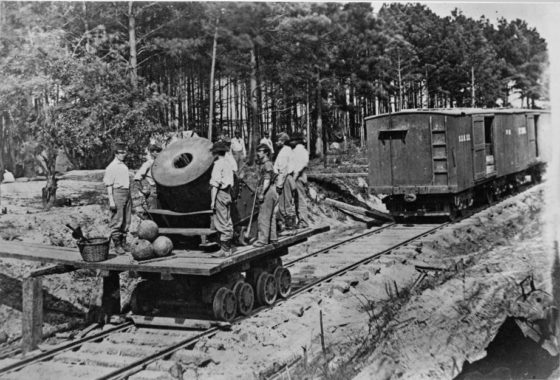
“In the fall of 1847, after the U.S. Army occupied Mexico City, the president of the Campeche government, Santiago Méndez, sent his son-in-law Justo Sierra O’Reilly to Washington D.C. to ask for military support, official recognition, and possibly even Yucatecan incorporation into the United States.”
By Benjamin J. Swenson
ONE OF THE most daunting obstacles facing Mexico during its war with the United States was unity – as the country was deeply divided along ethnic, political, and provincial lines. A case in point was the independent Republic of Yucatan (1841-1848). With no roads leading in or out, the entire peninsula was more like an island separated from the Mexican mainland.
Formed in 1823, the First Republic of Yucatan joined the newly independent United Mexican States in the early years of Mexican independence. As such, historians generally consider the 1841 to 1848 period as the “Second Republic of Yucatan.” The second republic reaffirmed its independence from federal authorities who were busy trying regain control over the rebellious Republic of Texas (1835-1845). The flag of Yucatan was even modeled after Texas standard, but its colors mimicked those of the Mexican flag: red and green.
In addition to declaring independence, the Yucatan, which largely consisted of descendants of the ancient Mayan people, adopted a constitution guaranteeing certain rights, freedom of religion, and trial by jury.
When Antonio López de Santa Anna seized power in Mexico City in late 1841, he attempted to placate the Yucatecan leaders but was unsuccessful. The following year, he sent forces to seize the breakaway region’s capital of Mérida. The expedition failed to suppress the independence movement – as an entrenched army of 10,000 Mayans outnumbered the federal troops. In 1843, Mexican soldiers occupying Campeche were finally withdrawn from the peninsula. Thereafter a period of uneasy rapprochement occurred.
U.S. invasion, blockade and wartime negotiations
In late 1845, on the eve of the Mexican-American War, the monarchist Mariano Paredes seized power in a coup d’état in Mexico City. Once hostilities with the Americans began in the spring of 1846, the Yucatan declared its neutrality in the conflict and sought recognition.
As the fighting between U.S. and Mexican forces raged along in the Rio Grande, violence erupted between opposing Yucatecan factions. These blocs represented separate power bases in Campeche and Mérida; both governments claimed to represent the Yucatecan people.
The Mérida faction aligned with the ruling Mexican regime, and thus found itself at war with the United States. The Campeche faction remained neutral.
With the U.S. Navy blockading the whole of Mexico, the leaders in Campeche lobbied Washington to recognize it as a legitimate government of the Yucatan and allow shipping to resume to its ports. American officials accepted the Campeche faction’s claim to neutrality but stopped short of recognizing the region as independent or a separate republic.

Envoy to Washington and Possible Annexation
In the fall of 1847, after the U.S. Army occupied Mexico City, the president of the Campeche government, Santiago Méndez, sent his son-in-law Justo Sierra O’Reilly to Washington D.C. to ask for military support, official recognition, and possibly even Yucatan’s incorporation into the United States.
In a letter to O’Reilly, U.S. Secretary of State James Buchanan outlined President James Polk’s stance regarding the breakaway republic: “The position of Yucatan is peculiar. The President cannot recognize her as a sovereign, independent State. She must still be considered as a portion of the Mexican Republic, but yet as neutral in the existing war.”[1]
Marte R. Gomez, a Mexican statesman and historian familiar with O’Reilly’s diaries written during his visit, believed that while the envoy was a talented and capable man “Mexico should celebrate the fact that Sierra O’Reilly had difficulty communicating” in English. Gomez also asserted that “President Polk… would have had no qualms about annexing Yucatan. It was fortunate for Mexico, and for the United States itself – because ambitions of conquest are always costly, as history repeatedly teaches – that President Polk’s political opponents tied his hands.”[2]
Polk never publicly expressed any interest in annexation, and there were plenty of good reasons to avoid it, but the point became moot when the Mexican-American War ended in 1848. After that, the Yucatecan factions buried the hatchet, and the breakaway republic rejoined Mexico.
Benjamin J. Swenson has a doctoral degree in history from Pompeu Fabra University (UPF) in Barcelona, Spain, covering Euro-American military and legal history, and the development of 19th-century guerrilla warfare and counterinsurgency doctrine during the antebellum era. He is currently an assistant professor at Hoseo University in Asan, South Korea.
[1] John Bassett Moore, ed. The works of James Buchanan, comprising his speeches, state papers, and private correspondence; Vol. 7 (Philadelphia, London, J.B. Lippincott Company, 1909), 485. Buchanan to Sierra (Washington D.C.), December 24, 1847.
[2] Marte R. Gomez, “Sobre Justo Sierra O’Reilly.” Historia Mexicana 3, no. 3 (1954): 320-321.












2 thoughts on “The Yucatan Republic — How a Mayan Independence Movement Became a Sideshow of the Mexican-American War”